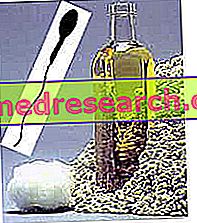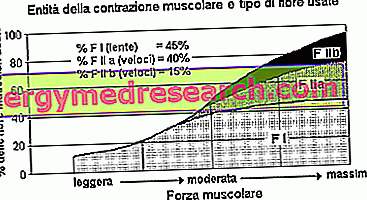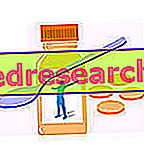What is that
Norethisterone is an active substance of the progestagen type, used in the treatment of various disorders that can affect adult women and women in the post-menopausal period.
Also known as norethindrone, norethisterone is a first-generation synthetic progestin similar to 17-hydroxyprogesterone.
Did you know that ...
Norethisterone is "famous" for its ability to delay the menstrual cycle ; for this reason, many patients ask their doctor for their prescription.

In combination with estrogens such as ethinyl estradiol and at the right dosage, norethisterone can also be used as a contraceptive . However, this use of norethisterone has become quite rare. In fact, it is mainly used in the treatment of menstrual disorders of various kinds and of the disorders that arise in post-menopause.
Examples of Specialties Medicines that contain Norethisterone
- Primolut Nor®
- Activelle® (in association with estradiol)
- Estalis Sequi® (in association with estradiol)
Indications
What is Norethisterone used for
The indications for the use of norethisterone vary depending on whether the active ingredient is used alone, or in association with an estrogen.
In detail, the use of only norethisterone is indicated in case of:
- Functional metrorrhagia and relapse prophylaxis;
- Primary and secondary amenorrhea;
- Premenstrual syndrome;
- Endometriosis;
- Polimenorrhea (in this case, the ability of norethisterone to delay the menstrual cycle can be exploited for therapeutic purposes).
In combination with estrogens such as estradiol, however, norethisterone is used in continuous combined hormone replacement therapy (TOS). These drugs should be administered to post-menopausal women in whom the last cycle dates back at least a year before.
Estradiol and norethisterone-based HRT is useful for alleviating post-menopausal symptoms and preventing osteoporosis in high-risk women.
Warnings
Before starting treatment with norethisterone (alone or in combination) it is necessary to inform the physician of your state of health, making it aware of the presence of any disorders and diseases of any kind. In detail, it is particularly important to inform the doctor:
- If you suffer from asthma;
- If you suffer from hypertension or other cardiovascular disorders;
- If you suffer from overweight or obesity;
- If you have a smoking habit;
- If you have a family history of tumors, particularly breast cancer;
- If you suffer from migraine;
- If you have epilepsy;
- If you are suffering from gastrointestinal diseases and / or autoimmune diseases.
It will then be the doctor's duty to prescribe the analyzes and tests necessary to rule out the presence of any contraindications to the use of the drug.
However, it is good to remember that taking norethisterone can cause an increased risk of venous and arterial thrombosis. Therefore, if any of the following symptoms appear, it is advisable to stop the treatment immediately and contact your doctor:
- Pain and / or swelling in one leg;
- Intense and sudden chest pain;
- Breathing difficulties;
- Sudden loss of vision (partial or total);
- Double vision;
- Difficulty of language;
- Collapse with or without seizures;
- Sudden and intense headache;
- Dizziness;
- Movement disorders;
- Sharp abdomen.
Drug interactions
Due to the pharmacological interactions that can be established, norethisterone should not be taken in case of concomitant therapy with any of the following drugs:
- Antiepileptic drugs;
- Antituberculous antibiotics (such as, for example, rifampicin or rifabutin);
- Antivirals used in the treatment of HIV;
- ketoconazole;
- Phytotherapeutic products based on St. John's wort (hypericum).
Furthermore, the concomitant intake of norethisterone and ciclosporin can cause an increase in plasma levels of the latter, which can lead to an increase in side effects.
In any case, before taking norethisterone it is always a good idea to tell your doctor if you are taking - or if you have recently been taken - medicines of any kind, including non-prescription drugs, herbal products and herbal products.
Side effects
Like any other active ingredient, norethisterone is able to cause side effects, although not all patients experience them. The type and intensity with which these effects occur vary from individual to individual depending on the dosage of drug used, the duration of treatment, the possible association with estrogens and the sensitivity of each individual to therapy.
Psychiatric and Nervous System Disorders
Norethisterone-based therapy can cause migraines, or aggravate the migraine already present. Also, it can cause:
- Depression;
- Nervousness;
- Insomnia;
- Mood swings
Gastrointestinal disorders
Following treatment with norethisterone, nausea, pain and / or abdominal distention and flatulence may occur.
Vascular pathologies
Norethisterone-based therapy can lead to the onset of thrombosis (arterial or venous), deep vein thrombosis and pulmonary embolism.
Reproductive System and Breast Disorders
Treatment with norethisterone may favor the appearance of:
- Uterine bleeding;
- Vaginal bleeding;
- Spotting, hypomenorrhea or amenorrhea (only when used in the treatment of endometriosis);
- Breast pain, swelling or breast enlargement and / or uterine fibroids (when used in TOS in association with estradiol).
Other Side Effects
Other side effects that may occur during treatment with norethisterone consist of:
- Allergic reactions in sensitive individuals;
- Skin reactions at the site of patch application (only when using the transdermal patch in the TOS);
- Visual disturbances;
- Generalized edema;
- Water retention.
Action mechanism
Norethisterone is a synthetic progestin with activities similar to those of endogenous progesterone. For this reason, its administration is able to exert a progestin action on the endometrium, useful for the treatment of primary and secondary amenorrhea, functional metrorrhagia and endometriosis. At the same time, due to the stabilizing effects it has on the endometrium, norethisterone is able to regularize the menstrual cycle.
Furthermore, norethisterone is able to inhibit gonadotropin secretion and suppress ovulation . The ability of this active ingredient to treat premenstrual syndrome is probably due to the suppressive action exerted on ovarian function.
Finally, the use of norethisterone in combination with estradiol in hormone replacement therapy is useful to balance the administration of estrogen in order to reduce the side effects. In fact, the unbalanced administration of estrogens increases the risk of onset of hyperplasia and endometrial carcinoma. The addition of a progestin - which is norethisterone - greatly reduces this risk.
Method of use and dosage
The pharmaceutical forms and the concentration of norethisterone in medicinal preparations vary according to the disorder to be treated.
Treatment of menstrual cycle disorders
For the treatment of menstrual cycle disorders, norethisterone is available as tablets containing 10 mg of active ingredient each.
The dose of active ingredient to be taken varies according to the type of menstrual disorder that must be treated:
- Functional metrorrhagia : the recommended dose is 5 mg of norethisterone (half a tablet) three times a day, for a total period of ten days.
- Prophylaxis of recurrences of functional metrorrhagia : we recommend taking 5 mg of active ingredient 1-2 times a day, from the sixteenth to the twenty-fifth day of the cycle.
- Primary and secondary amenorrhea : the recommended dose is 5 mg of norethisterone 1-2 times a day, for a period of 10 days.
- Premenstrual syndrome : we recommend taking half a tablet 1-3 times a day, during the lutein phase of the menstrual cycle.
- Endometriosis : it is recommended to start treatment with norethisterone between the first and fifth day of the cycle, taking half a tablet twice a day for a period of 4-6 months.
- Polimenorrhea : the recommended dose is half a tablet 2-3 times a day for a maximum period of 10-14 days. Treatment should begin three days before the presumed menstruation start date.
In any case, the indication of the correct intake dose belongs exclusively to the attending physician.
Hormone Replacement Therapy
Norethisterone used in TOS is available in combination with estradiol in the form of tablets or transdermal patches.
The recommended dose is one tablet per day, containing 0.5 mg of norethisterone and 1 mg of estradiol.
Transdermal patches, on the other hand, should be applied to the lower part of the abdomen, below the waist, and should NEVER be positioned on the breast. Usually, they must be replaced twice a week. However, for more detailed information, refer to the leaflet of the medicine .
Pregnancy and breastfeeding
Due to the potential adverse effects that may occur in the fetus or baby, the use of norethisterone by pregnant women and breast-feeding mothers should not be used.
Contraindications
When Norethisterone should not be used
The use of norethisterone is contraindicated in many situations that may vary depending on whether the active ingredient is used alone or in combination with estradiol. However, the main contraindications to the use of norethisterone are the following:
- Known hypersensitivity to norethisterone (and / or estradiol in the case of combined intake);
- In case of severe changes in liver function;
- If you suffer - or have suffered in the past - from thrombosis (venous or arterial), deep vein thrombosis, pulmonary embolism, myocardial infarction or stroke;
- If you suffer from angina pectoris;
- If you suffer from migraine with focal neurological symptoms;
- If you have diabetes with blood vessel damage;
- If you are suffering from sex hormone dependent tumors (eg breast cancer), confirmed or suspected;
- In pregnancy and during lactation.
Please note
For more detailed information on the method of use, side effects, precautions and contraindications for the use of norethisterone, we recommend that you carefully read the package insert for the norethisterone-based medicinal product prescribed by your doctor.



